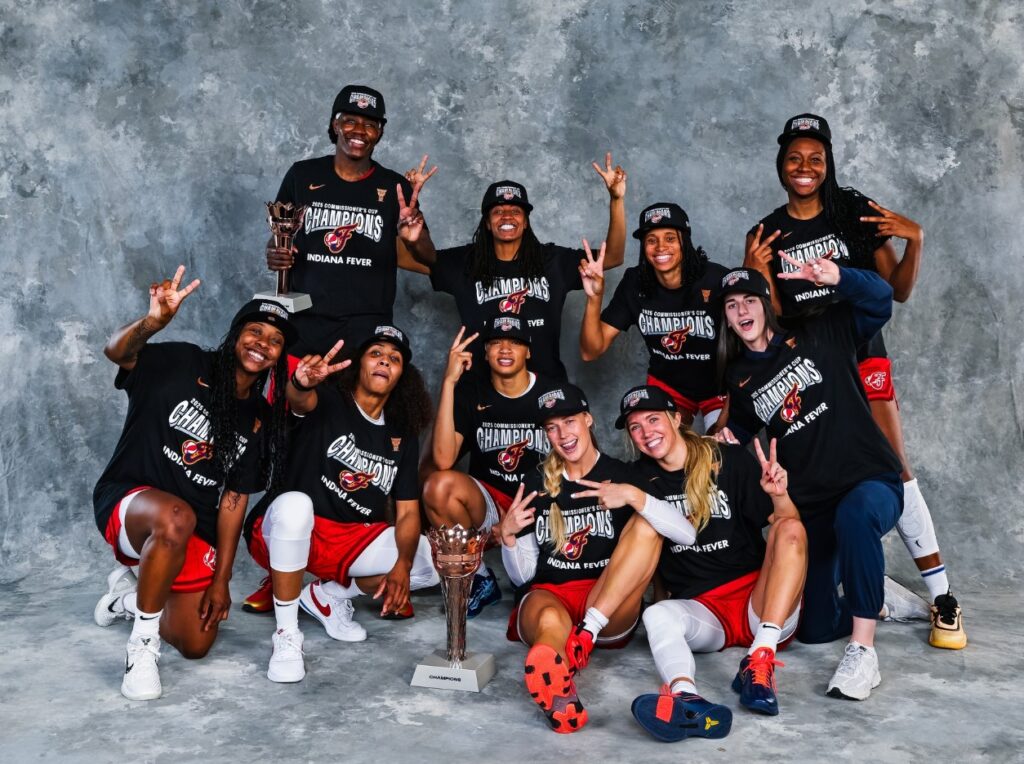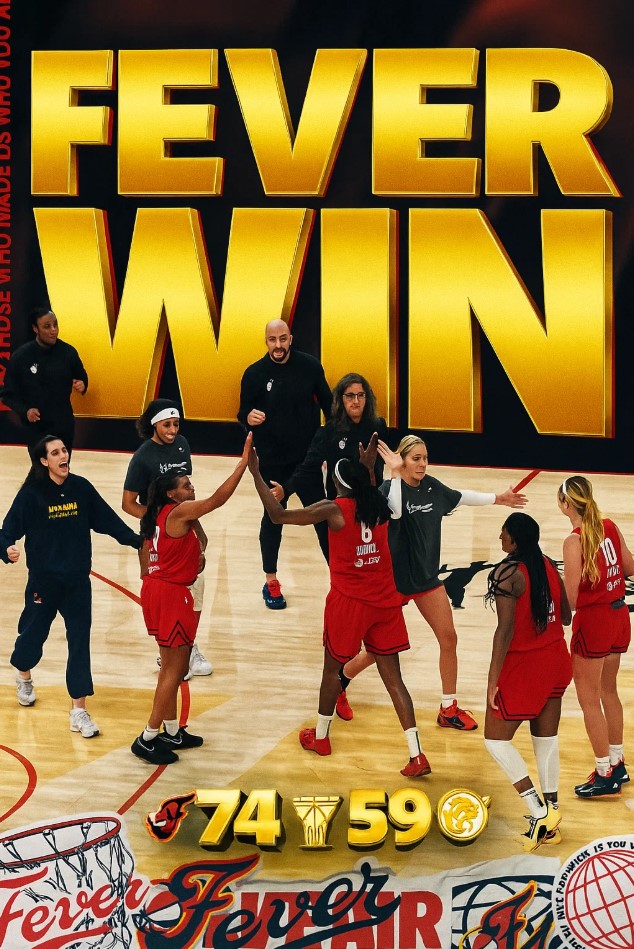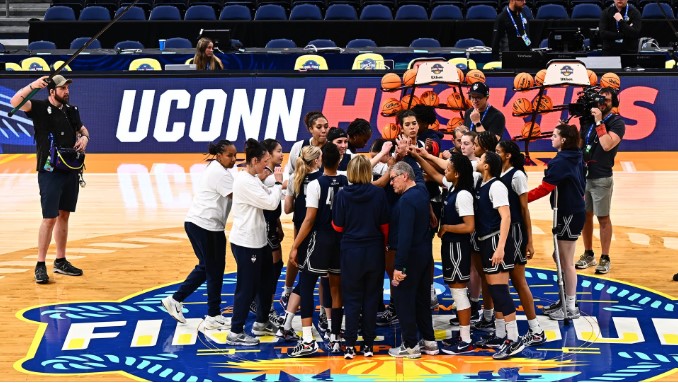The electric atmosphere inside the Target Center on the evening of July 1, 2025, was thick with anticipation, as fans of the Minnesota Lynx, clad in their signature blue and green, confidently expected their reigning champions to effortlessly defend their Commissioner’s Cup title against a perceived underdog, the Indiana Fever, thereby solidifying their dominance within the fiercely competitive Women’s National Basketball Association. However, as the final buzzer reverberated through the arena, signaling a completely unforeseen outcome, it was the Indiana Fever, a franchise often overlooked in discussions of league powerhouses, that emerged triumphant, having meticulously dismantled the formidable Lynx with a decisive 74-59 victory, marking an absolutely monumental achievement that etched their name into the annals of WNBA history with their inaugural Commissioner’s Cup championship. This unexpected triumph has ignited fervent discussions across the professional basketball landscape, prompting enthusiasts and analysts alike to ponder the fundamental questions: what intricate combination of strategic brilliance, individual heroics, and unwavering team cohesion allowed this “unlikely” squad to orchestrate such a stunning upset against a goliath of the league, securing their first-ever major trophy? Furthermore, does this remarkable display of skill, resilience, and tactical execution unequivocally signal the dawning of a new and exhilarating era for the Indiana Fever, an era potentially defined by sustained success and championship aspirations, particularly under the dynamic and explosive leadership of their newly crowned Most Valuable Player, Natasha Howard, whose scintillating performance undeniably anchored this historic win?

The narrative leading up to this fateful encounter strongly favored the Minnesota Lynx, a team boasting a roster replete with seasoned veterans, multiple All-Stars, and a championship pedigree, having consistently demonstrated their capacity to execute under immense pressure and deliver sterling performances on their home court, making their defeat all the more astonishing and captivating for observers. Conventional wisdom suggested that the Lynx’s meticulously structured offense, coupled with their notoriously suffocating defense, would inevitably overwhelm the youthful exuberance and comparatively less experienced lineup of the Indiana Fever, thereby leading to a predictable continuation of the established hierarchy within the WNBA’s elite tier. Yet, from the very first tip-off, it became glaringly apparent that the Indiana Fever had arrived in Minneapolis not merely to compete, but to conquer, exhibiting an unyielding determination and a meticulously crafted game plan that systematically dismantled the Lynx’s customary rhythm and exploited their vulnerabilities with surgical precision, leaving the home crowd in a state of stunned disbelief.
Central to the Indiana Fever’s unprecedented success was a defensive masterclass, meticulously orchestrated by their coaching staff, which effectively suffocated the Minnesota Lynx’s primary scoring options, forcing them into uncharacteristic turnovers and low-percentage shots throughout the entirety of the contest. The Fever’s defenders moved with a fluidity and intensity that bordered on prescient, anticipating passes, closing driving lanes with lightning speed, and contesting every single shot with relentless vigor, thereby disrupting the Lynx’s offensive flow and preventing them from establishing any semblance of their normally potent scoring rhythm. This suffocating defensive effort was complemented by an exceptional rebounding performance, with the Fever consistently winning the battle on the boards, particularly on the offensive end, which provided crucial second-chance opportunities that further demoralized the Lynx and bolstered the Fever’s own scoring output, demonstrating a fundamental commitment to gritty, tenacious basketball.

While the team’s collective defensive prowess was undoubtedly a cornerstone of their victory, the individual brilliance of Natasha Howard emerged as the undeniable linchpin of the Indiana Fever’s historic triumph, as her MVP-caliber performance transcended mere statistics, manifesting in a captivating display of all-around dominance on both ends of the court. Howard’s stat line of 16 points and 12 rebounds only scratches the surface of her profound impact on the game, as her unwavering energy, impeccable timing, and innate ability to make crucial plays at pivotal moments provided an invaluable emotional and strategic anchor for her teammates, inspiring them to elevate their own performances. Throughout the game, she exhibited an uncanny knack for securing contested rebounds in traffic, executing perfectly timed blocks that emphatically rejected Lynx scoring attempts, and delivering timely baskets that consistently blunted any potential momentum shifts the home team desperately tried to initiate, embodying the very essence of a true leader who rises to the occasion on the grandest stage. Her relentless pursuit of excellence, combined with her unparalleled competitive spirit, not only propelled the Fever to victory but also rightfully earned her the prestigious Commissioner’s Cup MVP award, a testament to her individual brilliance and her pivotal role in reshaping the narrative of the 2025 WNBA season.

Beyond Howard’s individual heroics, the Indiana Fever’s victory serves as a powerful testament to the efficacy of cohesive team play and the profound impact of strategic coaching, as every player on the roster contributed meaningfully to the collective effort, executing their assigned roles with precision and an unwavering commitment to the shared objective. The Fever’s offensive sets were characterized by intelligent ball movement, selfless passing, and a remarkable ability to find the open player, creating high-percentage scoring opportunities that consistently kept the Lynx defense on its heels and prevented them from settling into a comfortable rhythm. Furthermore, the coaching staff’s astute adjustments throughout the game, particularly in response to the Lynx’s attempts to mount comebacks, showcased their strategic acumen and their ability to keep their team focused and disciplined under immense pressure, allowing them to maintain their lead and ultimately secure the victory. This holistic team performance, where every individual sacrifice was made for the greater good of the collective, underscores the notion that true success in professional sports often stems not from individual brilliance alone, but from the harmonious synergy of a unified group working towards a common goal.

As the dust settles on this captivating Commissioner’s Cup final, the basketball world is left to ponder the far-reaching implications of the Indiana Fever’s stunning victory, which transcends the simple act of winning a trophy and carries the potential to fundamentally alter the competitive landscape of the WNBA for seasons to come. This triumph is not merely a fleeting moment of glory; it is a profound declaration of intent from a franchise that has demonstrably shed its underdog label and forcefully asserted its presence among the league’s elite, signaling a potential shift in power dynamics within the WNBA. The question that now echoes across locker rooms and fan forums alike is whether this historic Commissioner’s Cup win represents a singular, extraordinary achievement, or if it is merely the opening chapter of a new and formidable dynasty for the Indiana Fever, an ascendant force that promises to challenge for future championships and redefine expectations for years to come, especially with the indomitable Natasha Howard leading their charge. The resounding answer to that question will undoubtedly unfold in the seasons ahead, but for now, the Indiana Fever stands proudly at the pinnacle of the Commissioner’s Cup, basking in the well-deserved glory of a victory that will be remembered and celebrated for generations.